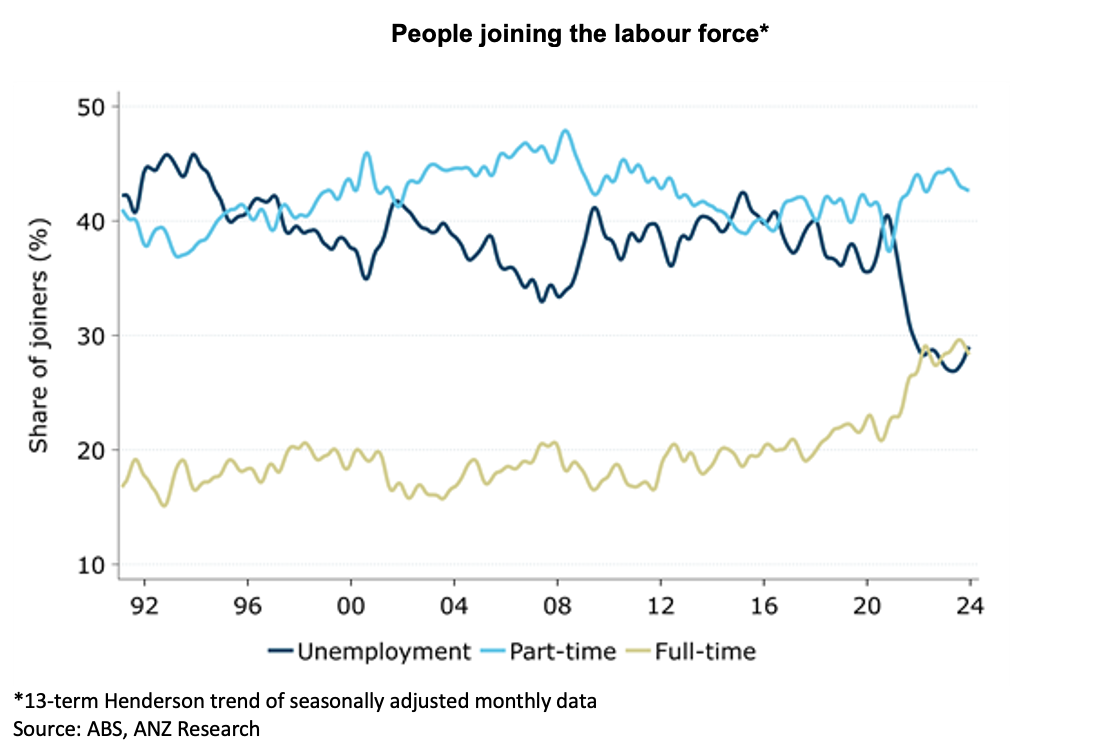Customers
Navigating shifting economic tides for SMEs
"Australia’s labour market is incredibly tight with the unemployment rate now at multi-decade lows and participation at record highs. This is pushing wage prices higher. The ABS Wage Price Index recorded its largest quarterly growth in its 26-year history in the September 2023 quarter.”

There are signs of a slowdown in Australia's resilient economic landscape with inflation, interest rates and labour dynamics emerging as key concerns for small to medium-sized enterprises (SMEs).
Strained supply chains, soaring prices and rising interest rates have combined to put pressure on businesses just as great shifts take place in the labour market, according to the National Skills Commission's report 'The transformation of Australia’s labour market.'
In this climate SMEs face three interconnected challenges if they are to navigate choppy waters and stay buoyant this year. But if past experience is anything to go by their ongoing resilience makes them well positioned to do so.
Unpredictable forces
Firstly, unpredictable economic forces threaten to impede growth. Demand for goods and services may vary, making forecasting and budgeting difficult for SMEs and ultimately jeopardising cash flows.
SMEs should reassess their marketing strategies and seek out innovative approaches to sustain customer interest.
Robust market research and marketing can equip sales teams with the ammunition to boost sales. Social media and digital advertising can also be potent tools for Australian SMEs.
Despite the challenges of navigating algorithms and search rankings, these platforms give business owners the flexibility to adjust advertising strategies in response to shifting demand, mitigating peaks and troughs throughout the year.
Additionally, SMEs should explore non-paid marketing. Building a strong online presence through engaging content such as blogs, podcasts or informative videos can cultivate a loyal following and enhance brand visibility without significant financial investment.
Using search engine optimization (SEO) techniques to improve organic search rankings can also drive traffic to SMEs' digital platforms without the need for paid advertising. Another affordable avenue is cross collaboration or partnerships with complementary businesses.
Another trick I have seen CEOs use is the many resources on ANZ’s website. We have an entire section of articles with ideas for businesses to get more customers, focused on marketing and more.
Rising business costs
Higher cost-of-living puts pressure on buyers as well as owners, many of whom are now tightening their purse strings. SME owners must recognise the pivotal role technologies such as Artificial Intelligence (AI), Software as a Service (SaaS), and Customer Relationship Management (CRM) systems play in sustainable growth.
AI’s capacity for data analysis and predictive modelling allows SMEs to make informed decisions and allocate resources more effectively.
Using AI algorithms for predictive analytics, SME owners can anticipate market trends, identify consumer preferences and manage inventory more efficiently – thus reducing costs and enhancing profitability.
SaaS platforms can give SMEs access to cost-effective software solutions, reducing the need for upfront investments in infrastructure and licensing fees.
Migrating functions such as accounting, human resources and marketing to cloud-based SaaS platforms affords SMEs improved integration and real-time data access. SaaS solutions allow business owners to increase or trim their technology needs as required.
Additionally, CRM systems can deliver stronger client relationships, enhance customer satisfaction, and capitalise on opportunities for repeat business and referrals. CRMs enable personalised experiences and can produce tailored marketing strategies to anticipate customer needs.
By centralising customer data, tracking interactions and automating communications, CRM systems help SMEs to nurture leads, resolve inquiries promptly and foster customer loyalty.
When used correctly, CRMs achieve this without the need for a big sales teams. In fact, all three tech-driven automation solutions can eliminate routine tasks, freeing up staff for higher-value activities.
Matching staffing to demand
Australia’s labour market is incredibly tight with the unemployment rate now at multi-decade lows and participation at record highs. This is pushing wage prices higher. The ABS Wage Price Index recorded its largest quarterly growth in its 26-year history in the September 2023 quarter.

The index rose 1.3 per cent during those three months, bringing the annual wage increase to 4 per cent. In the private sector, annual wage growth was 4.2 per cent for the same quarter – the highest since December 2008.
In addressing these staffing challenges SMEs should consider a multifaceted approach to prioritise flexibility, innovation and talent management.
Considering tools such as flexible work arrangements, remote work options, compressed workweeks or flexible scheduling can help. This can allow a business to hire outside its geographical location, broadening the talent pool.
SMEs can also invest in upskilling and reskilling existing employees to allow them to adapt to evolving market dynamics.
Professional development, training and mentorship/sponsorship programs, can enhance employee engagement and loyalty.
Giovanni Siano, owner and director of Geelong-based business Home Instead Geelong & Bellarine understands the value of training. His company offers a range of in-home care solutions to the elderly and people living with a disability.
In 2021 when labour shortages were everyday headlines, Giovanni started a program that offered people who may have been out of the workforce for some time on the job training and an accreditation in Certificate Three for in-home support. Employees are allocated a care-giver coach to promote skills building and confidence. He grew his company from 10 employees to 380 in just three years.
While challenges can bring stress to entrepreneurs, there is cause for optimism. During the early days of the pandemic, I observed how many businesses remained agile, adaptable and proactive amid the economic uncertainty.
SMEs embraced innovation to weather the storm and I am sure this year will be no different.
Paul Presland is General Manager of Small to Medium Enterprise Banking at ANZ
The ANZ Business Growth Program includes free webinars which are open to all Australian businesses.
related articles:
Customers
Strengthening island life through commerce
Small business
